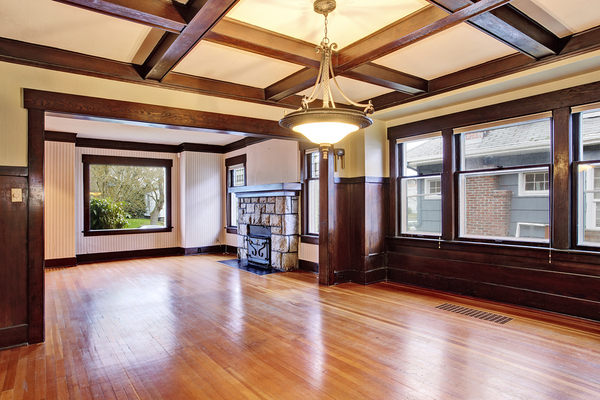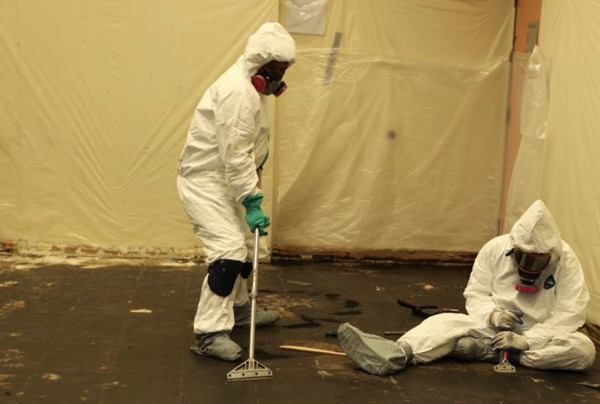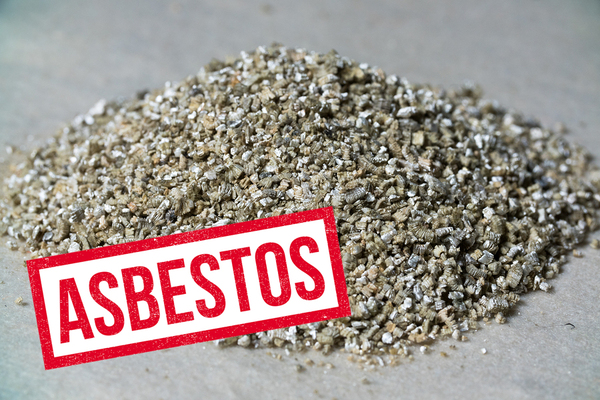The word strikes fear in the heart of many a home buyer, and for good reason: asbestos is risky business. It’s responsible for serious illnesses, you can’t always see it to know if you’re breathing the particles, and sometimes it requires a team of abatement professionals.
Asbestos is definitely not a selling point for buyers, but it might not be a deal killer for them, either. Although it was banned for residential use during the late 1970s, here are five areas where you might encounter the substance during an older home inspection.
#1: Ceiling Tiles
The drop ceilings that many homeowners despise are sometimes an asbestos culprit. So are popcorn ceilings that get just about as much love as tiles. Newer ceiling tiles may look nearly identical to hazardous ones, but they don’t contain asbestos. Accordingly, the same applies to newer popcorn texture. It’s difficult to know if you’re looking at a dangerous situation or not.
Smaller ceiling tiles, usually square, are a more likely danger, as are popcorn ceilings in an older home. You should avoid contact with tiles or the rough popcorn texture during your home inspection services. Loose and damaged ceiling tiles and texture are especially risky and merit the use of a respirator and eye protection.

Any plaster wall constructed between 1920 and 1980 might contain asbestos.
#2: Plaster Walls
Most plaster walls don’t contain asbestos. However, for a few decades, some plasterers used asbestos as an additive. At the time, the reasoning seemed sound. It offered acoustical benefits as well as unsurpassed fire protection. The health risks were unknown.
The advent of asbestos in plaster was 1920 and it continued in varying degrees until the asbestos ban in 1977. Homes with plaster walls built or renovated between 1920 and the mid-1980s should be considered suspicious.

Hazardous materials workers use special suits to remove cutback adhesive.
#3: Floor Tiles
You’ve probably seen the classic asbestos flooring without realizing the risks that lurked inside. It was installed in office buildings for decades. Many homes had asbestos flooring, as well. Sold in sheets or 12-inch tiles, most asbestos flooring was white or light colored with a speckled design, although some flooring was dark brown, black or variegated. It can be difficult to tell asbestos flooring from linoleum, but linoleum is both natural and safe. It’s made from ground cork and linseed oil.
Inspectapedia says, “Depending on the particular mixture of asphalt, gilsonite, asbestos, limestone, and pigment used, these floor tiles could contain as much as 70% asbestos by weight.” As if the flooring wasn’t risky enough, the classic mastic, which is usually black in color and sometimes called “cutback” adhesive, may also contain asbestos.
_600x.jpg)
If a pipe has a thick, white wrap, chances are it contains asbestos.
#4: Boiler Pipe and Attic Insulation
Asbestos is renowned for its fire resistance and ability to insulate. As such, it was frequently used in both industrial and residential settings to insulate areas such as boiler pipes and attic floors.
On pipes, asbestos usually has the characteristic appearance of a thick wrap, almost like an old-fashioned plaster cast for a broken arm. It’s often painted white. In good condition, it’s considered safe. In attics, asbestos is loose, almost like gravel, and never safe. It’s wise not to enter an attic with old vermiculite or perlite insulation because it is always friable/breathable.
#5: Home Siding
Another area where asbestos performed well while unwittingly putting homeowners at risk was siding. The typical style that you might find is a rugged hardboard with a flat or ridged surface and a straight, wavy or jagged bottom edge.
Asbestos siding may still be both in service and in good condition today. If it’s sealed, it’s considered safe. Inspectapedia cautions that it resembles modern fiber cement, so use care not to misidentify the material.
In good condition and with a proper sealer, asbestos isn’t necessarily a hazard. The risks lie in whether or not the fibers are breathable. With loose insulation, the risk is ever-present. The best solution is professional abatement, which can be pricey. For almost everything else, including plaster, ceiling and floor tiles, siding and wrapped insulation, good maintenance can keep asbestos safe for residents indefinitely.
Home inspectors take certain risks to protect the customers who depend on them. With a great home inspection reporting app, you can focus on staying safe while providing the best possible service. If you’re ready for an app that works as hard as you do, download our home inspection app for Android or get it at the Apple App Store today.
Image credits:
Cutback Adhesive, by NAVFAC , via Flickr Creative Commons.
Asbestos pipe insulation, By User: EPO , via Wikimedia Commons.

